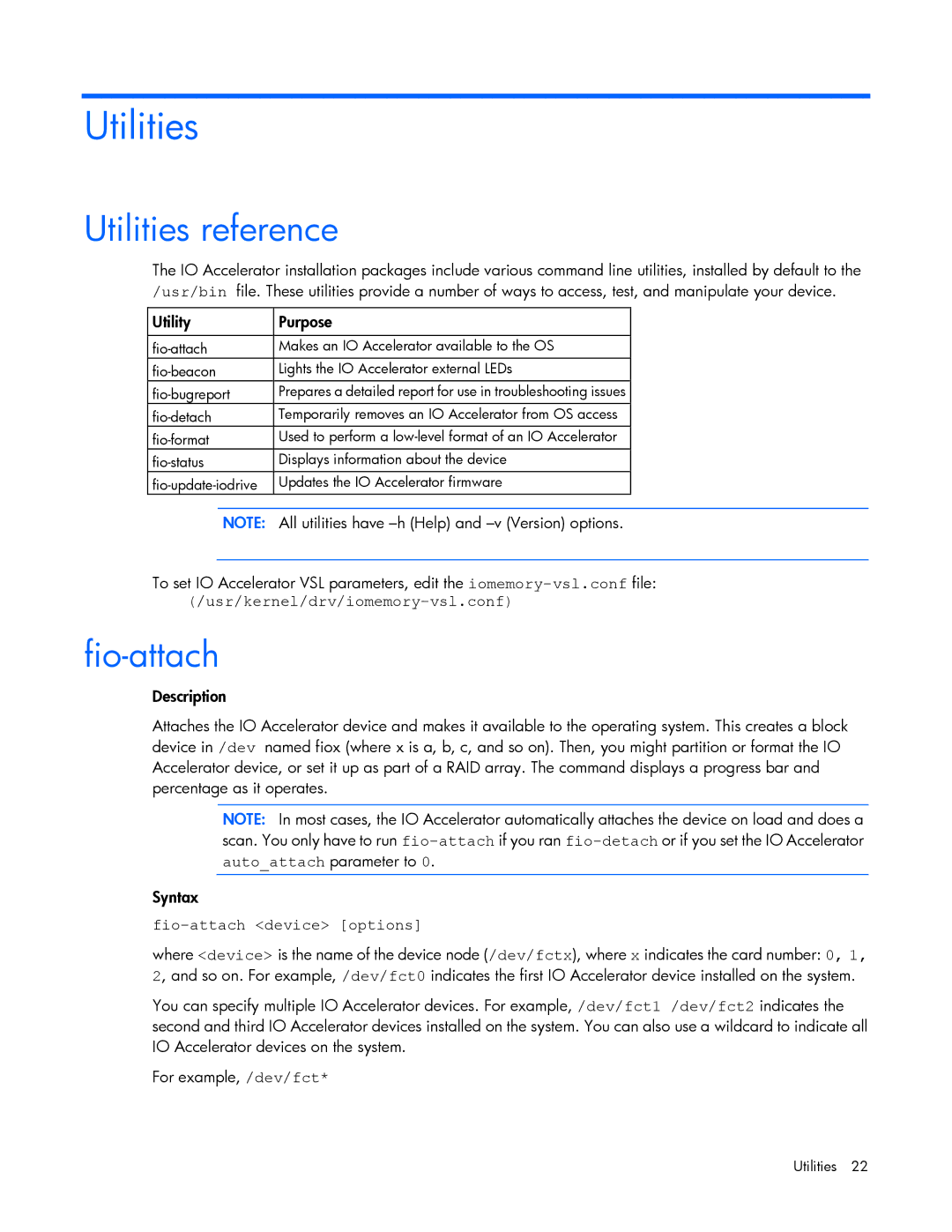
Utilities
Utilities reference
The IO Accelerator installation packages include various command line utilities, installed by default to the /usr/bin file. These utilities provide a number of ways to access, test, and manipulate your device.
Utility | Purpose |
|
|
Makes an IO Accelerator available to the OS | |
Lights the IO Accelerator external LEDs | |
Prepares a detailed report for use in troubleshooting issues | |
Temporarily removes an IO Accelerator from OS access | |
Used to perform a | |
Displays information about the device | |
Updates the IO Accelerator firmware |
NOTE: All utilities have
To set IO Accelerator VSL parameters, edit the
fio-attach
Description
Attaches the IO Accelerator device and makes it available to the operating system. This creates a block device in /dev named fiox (where x is a, b, c, and so on). Then, you might partition or format the IO Accelerator device, or set it up as part of a RAID array. The command displays a progress bar and percentage as it operates.
NOTE: In most cases, the IO Accelerator automatically attaches the device on load and does a scan. You only have to run
Syntax
fio-attach <device> [options]
where <device> is the name of the device node (/dev/fctx), where x indicates the card number: 0, 1, 2, and so on. For example, /dev/fct0 indicates the first IO Accelerator device installed on the system.
You can specify multiple IO Accelerator devices. For example, /dev/fct1 /dev/fct2 indicates the second and third IO Accelerator devices installed on the system. You can also use a wildcard to indicate all IO Accelerator devices on the system.
For example, /dev/fct*
Utilities 22
